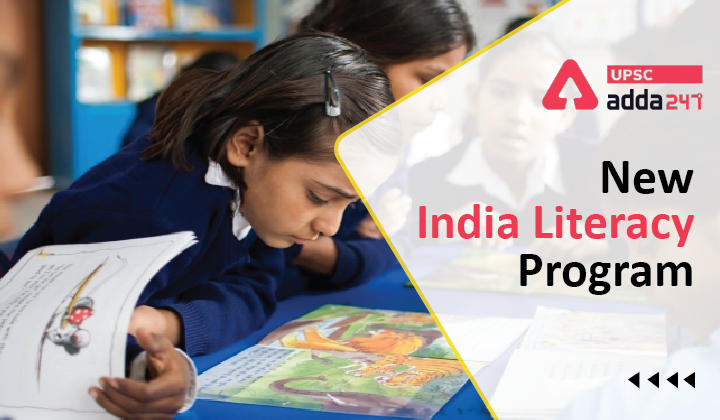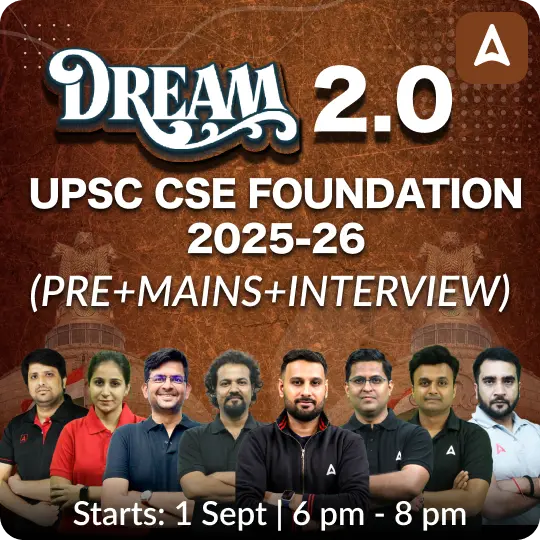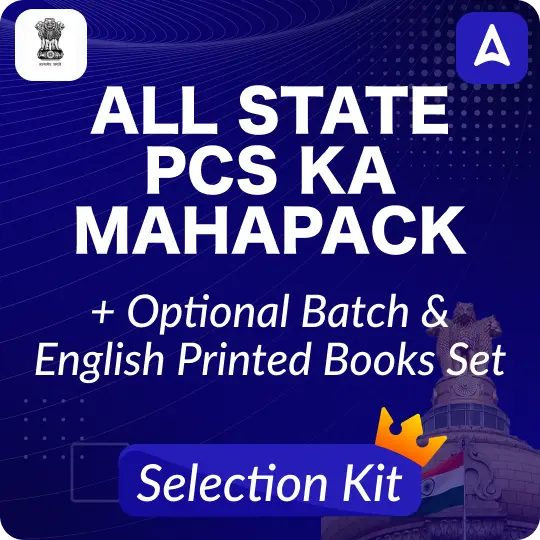Table of Contents
New India Literacy Programme: Relevance for UPSC
- NILP falls as an important topic under GS 2: Government policies and interventions for development in various sectors
New India Literacy Programme: Context
- Ministry of Education approved the “New India Literacy Programme” (NILP) for the period FYs 2022-2027 to cover all the aspects of adult education in India.
New India Literacy Programme: Key points
- The scheme will align with National Education Policy 2020 and Budget Announcements 2021-22. has recommendations for Adult Education and Lifelong Learning.
- In Union Budget 2022, announcement enabled the increased access of resources, online modules covering the entire gamut of adult education.
- The term “Education For All” will be used in place of “Adult Education” by the Ministry and the Rationale behind the decision is that the terminology “Adult Education” is not incorporating appropriately all non-literates of 15 years and above age group.
- NILP financial outlay: The estimates of “New India Literacy Programme” is around Rs.1038 crore which includes Central share of Rs.700 crore and State share of Rs.338 crore respectively for the FYs 2022 -27.
NILP objective
- Bring under the purview not only foundational literacy and numeracy but also other components which are necessary for a citizen of 21st century such as
- Critical life skills including financial literacy, digital literacy, commercial skills, health care and awareness, child care and education, and family welfare; vocational skills development with a view towards increasing local employment
- Basic education including preparatory, middle, and secondary stage equivalency
- Continuing education including engaging holistic adult education courses in arts, sciences, technology, culture, sports, and recreation, as well as other topics of interest or use to local learners, such as more advanced material on critical life skills.
NILP implementation
- The scheme will be implemented through community inclusion through online mode.
- The material and resources shall be provided digitally for easy access to registered volunteers through easily accessible digital modes, viz, TV, radio, cell phone-based free/open-source Apps/portals, etc.
NILP coverage
- The scheme will cover non-literates of the age of 15 years and above in all state/UTs in the country.
- The target for Foundational Literacy and Numeracy for FYs 2022-27 is 5 crore learners (1 crore per year) by using “Online Teaching, Learning and Assessment System (OTLAS)” in collaboration with National Informatics Centre, NCERT and NIOS and a learner may register him/herself with essential information like name, date of birth, gender, Aadhaar number, mobile number etc. in OTLAS.
NILP salient features
- School will be the basic unit for implementation of the scheme and will be used for conducting survey of beneficiaries and Voluntary Teachers (VTs).
- Different strategies are to be adopted for different age group.
- Flexibility for States/UTs will be provided to undertake innovative activities.
- Foundational Literacy and Numeracy will be imparted through Critical Life Skills to all non-literates in the age group of 15 years and above.
- Extensive use of Technologies to impart Adult Education for wider coverage of the scheme.
- Performance Grading Index (PGI) for State/UT and district level will show the performance of States and UTs to implement the scheme and achievements on yearly basis by weighing both the physical and financial progress through UDISE portal to keep a track of the implementation of the policy.
- CSR/Philanthropic support may be received by hosting ICT support, providing volunteer support, opening facilitation centres for learners and for providing IT access to economically weak learners in the form of cell phones, etc
- Priority and Saturation in Literacy– The age cohort of 15-35 will be saturated first followed by ages 35 and above.
- Priority will be given in terms of categories to the Girls and women, SC/ST/OBC/Minorities, Persons with Special Needs (Divyangjans), Marginalized/ Nomadic/ construction workers/ laborers/etc. who can substantially and immediately benefit from adult education.
- In terms of location/area, the focus shall be on all aspirational districts of NITI Aayog, districts with literacy rates less than the National/State average, districts with female literacy rates less than 60% as per the 2011 Census, Districts/ Blocks with large SC/ST/ Minority population, Educationally Backward Blocks, Left Wing Extremism Affected districts.
- Convergence with Ministries and Departments for effective implementation of NILP.
NILP as Jan Andolan
- The three crores students/children of around 7 lakh schools registered under UDISE along with about 50 lakh teachers of Government, Aided and Private schools will participate as volunteer.
- An estimated 20 lakh students from Teacher Education and Higher Education Institutions will be actively involved as volunteer.
- Support will be garnered from PRIs, Anganwadi workers, ASHA workers and an estimated 50 lakhs NYSK, NSS and NCC volunteers.
- There will be involvement of community, participation of philanthropic/CSR organizations through volunteerism and through Vidyanjali portal.
- States/UTs will promote individual/ family/ village/ district success stories through various platforms.
- It will utilize all types of media – Electronic, Print, Folk & Inter-personal platforms including social media platforms like Facebook, Twitter, Instagram, WhatsApp, YouTube, TV channels, radio, etc.
- Central Portal to be developed by NIC for aggregated data capturing equipped with Mobile App, Online Survey Module, Physical & Financial Modules and Monitoring Framework, etc.
- Assessment of Literacy will be conducted using scientific format to capture the real-life learnings and skills for functional literacy. Assessment on demand will also be made through OTLAS and e-certificate jointly e-signed by NIOS and NLMA will be issued to the learner.
- Annual Achievement Survey of Learning Outcomes by samples of 500-1000 randomly selected learners from each state/UT and Outcome-Output Monitoring Framework (OOMF).
Non-literates in India
- As per Census 2011, the absolute number of non-literates of the country in 15 years and above age group is 76 crore (Male 9.08 crore, Female 16.68 crore).
- In consideration of the progress of persons certified as literates being to the tune of 7.64 crore under the Saakshar Bharat programme implemented during 2009-10 to 2017-18, it is estimated that currently around 12 crore adults are still non-literate in India.


 TSPSC Group 1 Question Paper 2024, Downl...
TSPSC Group 1 Question Paper 2024, Downl...
 TSPSC Group 1 Answer key 2024 Out, Downl...
TSPSC Group 1 Answer key 2024 Out, Downl...
 Cabinet Ministers of India 2024, New Cab...
Cabinet Ministers of India 2024, New Cab...







